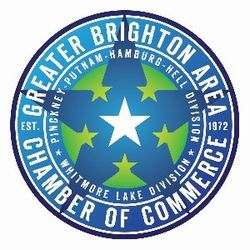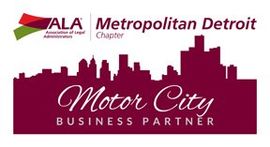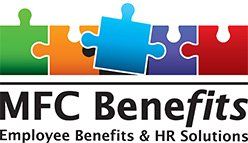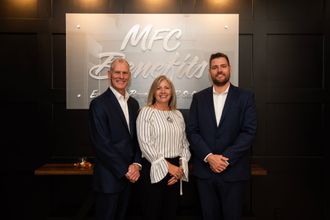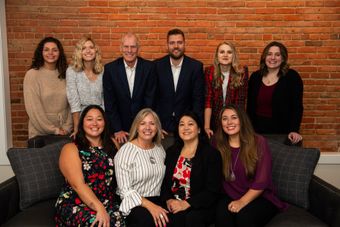PROVIDING TAILORED BENEFIT SOLUTIONS SINCE 1986
GROUP PRODUCTS
In our highly competitive economy, being able to offer your employees exceptional benefit packages is a key component in good management. Let MFC Benefits
create the perfect customized package for your company.
Learn More
BENEFIT SERVICES
From informational seminars to programs tailored to your company's needs, we offer a wide range of benefit services. Let us help you provide your staff with the benefits they want and need.
Learn More
ABOUT US
The secret to our success is our team of professional benefits advisors and service representatives. Call us today at 248-663-4765 and we'll design, implement, and service an exclusive benefit package for your business.
Learn More
MISSION STATEMENT
Designing, implementing, and servicing exclusive benefit packages for you and your employees.
LATEST MEDIA
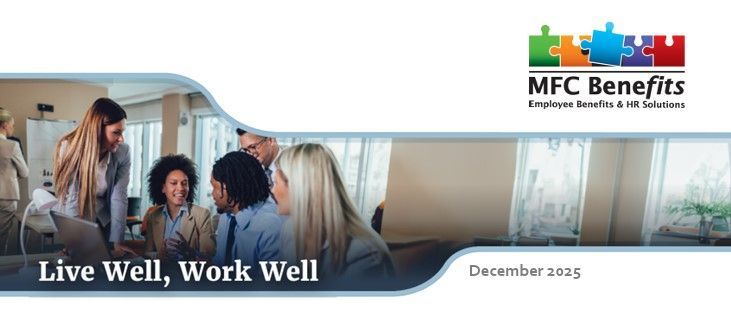
Learn more about preventing burnout during the holiday season, mindful holiday eating, and learning your family health history. PREVENTING BURNOUT DURING THE HOLIDAY SEASON Everyday life can be hectic enough without the added pressure of the holidays, which can also be a source of major stress and burnout for many people. Burnout isn’t just about being tired; it’s emotional, mental and physical depletion caused by prolonged stress. However, with some planning and self-care, you can protect your mental and physical well-being while still enjoying the festivities. The American Psychological Association reports that the holiday season brings added stress for 2 out of every 5 people. Consider these tips to help prevent burnout: • Set realistic expectations. Social media and cultural norms often create pressure. Focus on meaningful experiences rather than flawless decorations, trendy outfits or extravagant gifts. Gratitude journaling can help shift your mindset toward what truly matters. • Start early. No matter your holiday plans, spreading out your tasks and starting early will help with stress levels. This way, you won’t be waiting until the last minute to complete tasks and rushing through responsibilities. • Take time to recharge. Self-care during the holidays isn’t indulgent; it’s essential. Regular breaks from daily stressors can prevent burnout by helping your body and mind relax and recharge. Rest restores your energy, boosts your mood and increases productivity. • Maintain boundaries. Boundaries protect your emotions and your physical space. They can be a healthy strategy as you navigate the holiday season and a full calendar. Only commit to the invitations or requests that truly matter to you and let go of the rest. • Make a list of all visible and invisible tasks. Often, the mental load of holiday planning falls on one person and can go unnoticed. For example, “buying a gift” includes making a budget, understanding interests or sizes, deciding on a gift, purchasing it and wrapping it. When invisible labor becomes visible, it’s easier to delegate tasks and ask for help. While these practical strategies can help address some holiday stressors, you should also seek further support from a doctor or mental health professional. MINDFUL HOLIDAY EATING The holiday season often means more parties and gatherings—and an abundance of festive food and drinks. However, practicing mindful holiday eating can help you savor the season without overdoing it. This healthy approach encourages focusing on preparing and consuming food in a distraction-free environment. Mindful eating offers physical and mental health advantages, such as better body cue recognition, overeating prevention, healthier food choices, stress reduction and weight loss. Consider the following mindful eating tips: • Honor your hunger and satiety cues. • Start with small portions. • Use all five senses when you eat. • Take small bites and chew slowly. • Limit distractions while eating. • Don’t skip meals. Mindful eating doesn’t mean avoiding your favorite holiday foods. It’s simply about bringing more awareness and enjoyment to your food. You can also try to prioritize the social aspect of gatherings and engage in meaningful conversations to reduce your focus on food. By practicing mindful holiday eating, you can enjoy the season and create lasting memories. Contact a dietitian if you need guidance on mindful eating. LEARNING YOUR FAMILY HEALTH HISTORY Most people have a family history of at least one chronic disease. Your family health history is one of the most powerful tools for understanding your risk for disease and conditions like heart disease, diabetes and certain cancers. Knowing this information can help you and your health care provider make informed decisions about screenings, lifestyle changes and preventive care. A 23andMe survey revealed that although 9 out of 10 Americans agree that knowing family health history is important for knowing their own health risks, fewer than half (38%) actually know it. The holiday season is a great time to gather or update family health history information so you can take charge of your health in the new year. Consider asking your family members these questions: • What is your family’s ancestry or ethnic background? • Do you have any chronic diseases, such as heart disease, diabetes or obesity? • Do you have any health conditions, such as high blood pressure, high cholesterol or asthma? • Have you been diagnosed with any other serious health issues, such as cancer, stroke or Alzheimer’s disease? • How old were you when each of these diseases or health conditions was diagnosed? Remember to ask about the cause and age of death for relatives who have died. It’s important to record your family health history and continually share updates with family members. The U.S. surgeon general’s web-based tool, My Family Health Portrait, can help you keep track of information. If you have health concerns, talk with your doctor. This article is intended for informational purposes only and is not intended to be exhaustive, nor should any discussion or opinions be construed as professional advice. Readers should contact a health professional for appropriate advice. © 2025 Zywave, Inc. All rights reserved. Download the PDF copy here.

Learn more about IRS releasing Employee Benefit Plan Limits and Federal Agencies outline options for offering Fertility Benefits. IRS RELEASES EMPLOYEE BENEFIT PLAN LIMITS FOR 2026 Many employee benefits are subject to annual dollar limits that are updated for inflation before the beginning of each calendar year. Note that some benefit limits are not adjusted for inflation, such as the catch-up contribution limit for health savings accounts (HSAs). Although the contribution limit for dependent care flexible spending accounts (FSAs) is not indexed for inflation, the One Big Beautiful Bill Act increased the limit, effective for 2026. Employers should confirm that payroll systems are updated for 2026 limits and that the new limits are communicated to employees. The following benefit limits apply for 2026: HSA Contributions - Single coverage: $4,400 (up $100 from 2025); - Family coverage: $8,750 (up $200 from 2025); and - Catch-up contributions: $1,000 Health FSA Limits - Employee pre-tax contributions: $3,400 (up $100 from 2025); and - Carryover of unused funds: $680 (up $20 from 2025) Dependent Care FSA Contributions - $7,500 or $3,750 if married and filing taxes separately (up from prior years’ limit of $5,000 and $2,500, respectively) 401(k) Contributions - Employee elective deferrals (pre-tax and Roth contributions): $24,500 (up $1,000 from 2025); - Catch-up contributions: $8,000 (up $500 from 2025). A higher catch-up contribution limit ($11,250, no change from 2025) applies to participants ages 60-63; and - FICA wage threshold for Roth catch-up contribution mandate: $150,000 (new requirement for 2026) Transportation Fringe Benefits - Monthly limits: $340 (up $15 from 2025) FEDERAL AGENCIES OUTLINE OPTIONS FOR OFFERING FERTILITY BENEFITS Federal agencies have released joint guidance clarifying existing categories of excepted benefits that employers can use to offer fertility benefits. Excepted benefits are certain types of employee benefits that are not subject to HIPAA’s portability rules or the ACA’s market reforms. The guidance follows Executive Order 14216, which directed the Domestic Policy Council (DPC) to submit a list of policy recommendations to protect in vitro fertilization (IVF) access and reduce out-of-pocket and health plan costs for IVF treatment. As part of those policy recommendations, the DPC recommended issuing guidance that would allow employers to expand access to coverage for fertility through the provision of an excepted benefit. The new guidance provides that employers may offer: - Fertility benefits as an independent, noncoordinated excepted benefit, if certain conditions are met; - An excepted benefit health reimbursement arrangement (HRA) that covers an employee’s out-of-pocket costs for fertility treatments, as long as the HRA meets applicable regulatory requirements; or - Benefits for coaching and navigator services to help employees understand their fertility options under an employee assistance program that qualifies as a limited excepted benefit. Federal agencies have indicated they intend to issue more guidance in the future to expand employers’ options for offering fertility benefits. Provided to you by MFC Benefits, LLC © 2025 Zywave, Inc. All rights reserved Download the PDF copy here. Link: http://chrome-extension://efaidnbmnnnibpcajpcglclefindmkaj/https://content.zywave.com/file/b6f7a224-b3a3-4409-a8f2-953f0994d66a/Benefits%20Buzz%20Newsletter%20January%202024.docx Link: http://chrome-extension://efaidnbmnnnibpcajpcglclefindmkaj/https://content.zywave.com/file/b6f7a224-b3a3-4409-a8f2-953f0994d66a/Benefits%20Buzz%20Newsletter%20January%202024.docx
Happy Customer Reviews
Memberships
